Abstract
Kaye, Donald (New York Hospital-Cornell Medical Center, New York, N.Y.), Michelle Palmieri, and Heonir Rocha. Effect of bile on the action of blood against Salmonella. J. Bacteriol. 91:945–952. 1966.—Bile is superior to Trypticase Soy Broth (BBL) as a medium for isolation of Salmonella from blood. In addition to inhibitory activity against many of the common bacterial contaminants, bile has the additional advantages of a greater frequency of isolation of Salmonella and more rapid isolation. This study investigated the factors responsible for the superiority of bile. A 20% dilution of normal human blood in Trypticase Soy Broth was usually inhibitory or bactericidal against strains of Salmonella. Similarly, a 20% dilution in Trypticase Soy Broth of serum from patients with Salmonella bacteremia was frequently inhibitory or bactericidal for the salmonellae isolated from their blood. Bile inactivated the bactericidal activity of blood or serum by inactivating complement activity. Bile (13%) in Trypticase Soy Broth inactivated complement activity in 33% blood or serum. Although bile has anticoagulant and hemolytic effects, no evidence was found that these activities contribute to the superiority of bile over Trypticase Soy Broth as a culture medium for Salmonella. No evidence was found for a growth-promoting factor in bile for Salmonella. Bile was much more effective than 0.5 or 2.0% sodium taurocholate broth in inactivating the bactericidal activity of blood.
Full text
PDF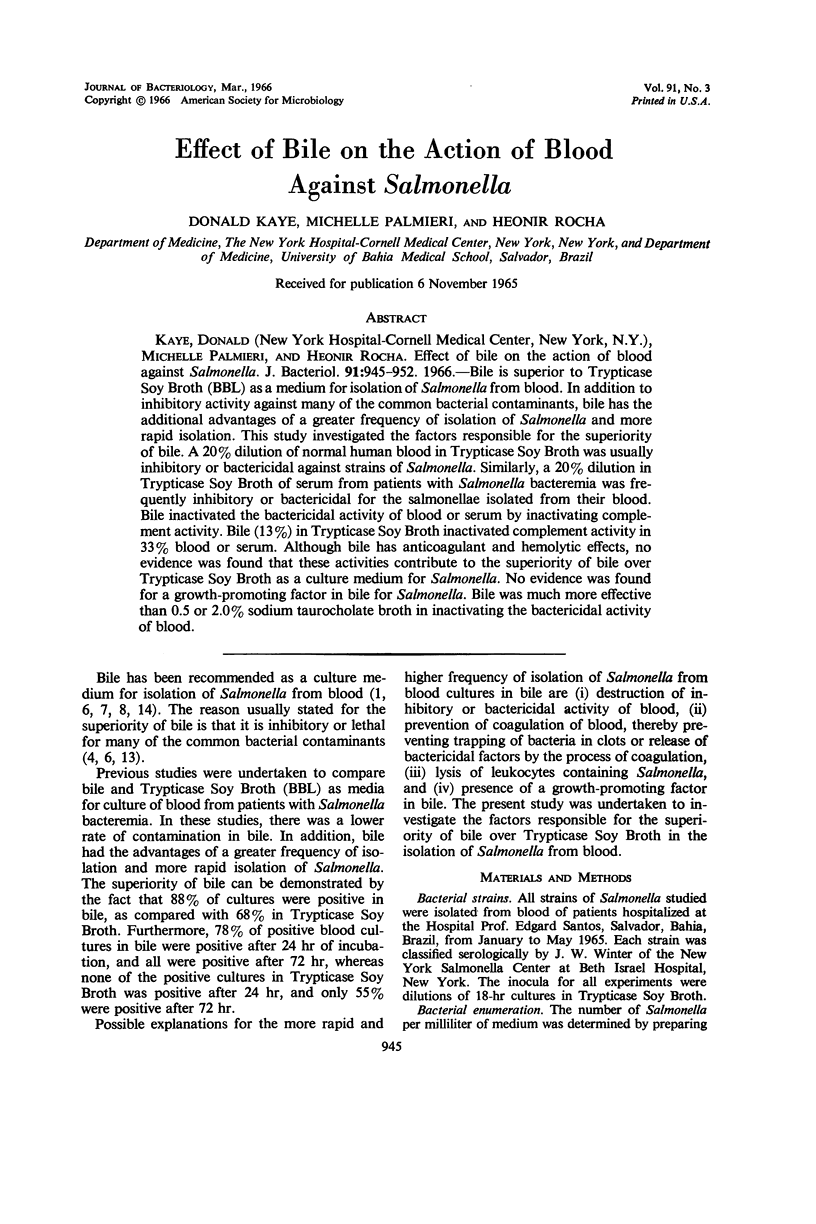
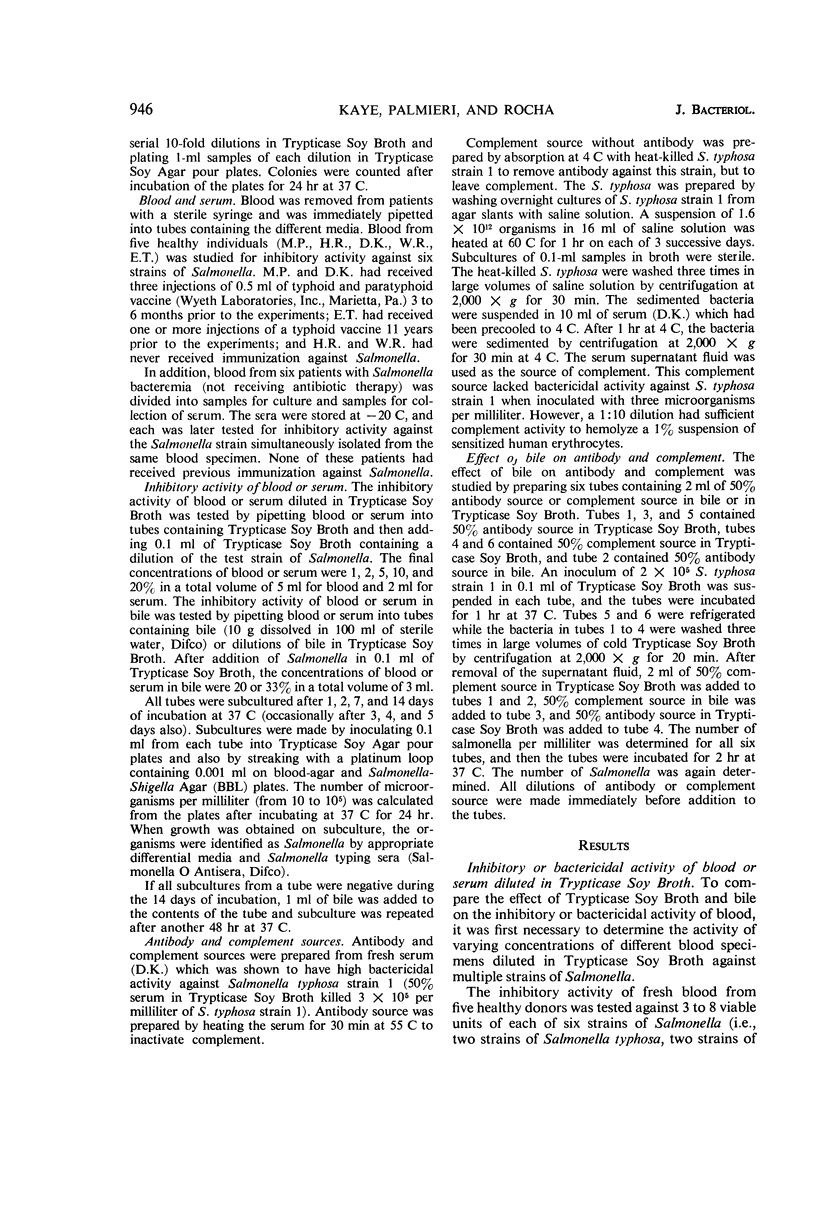
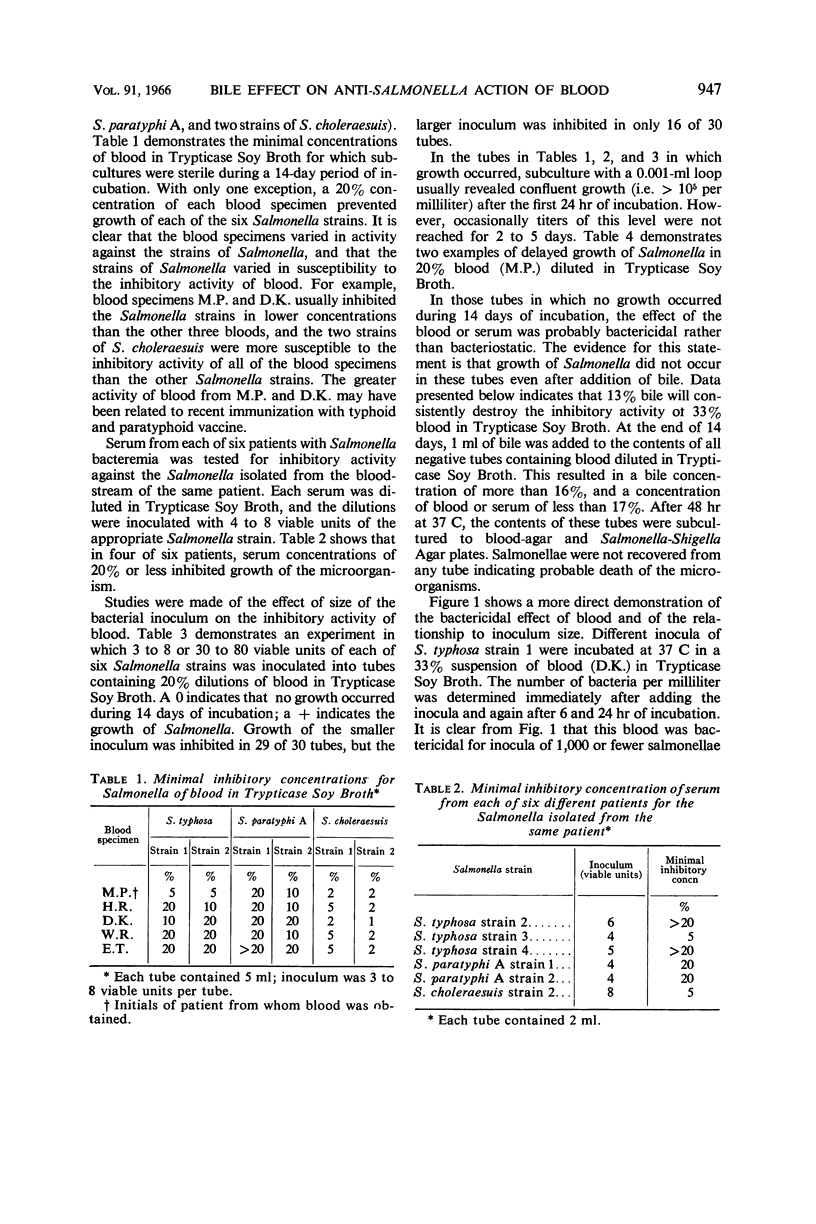
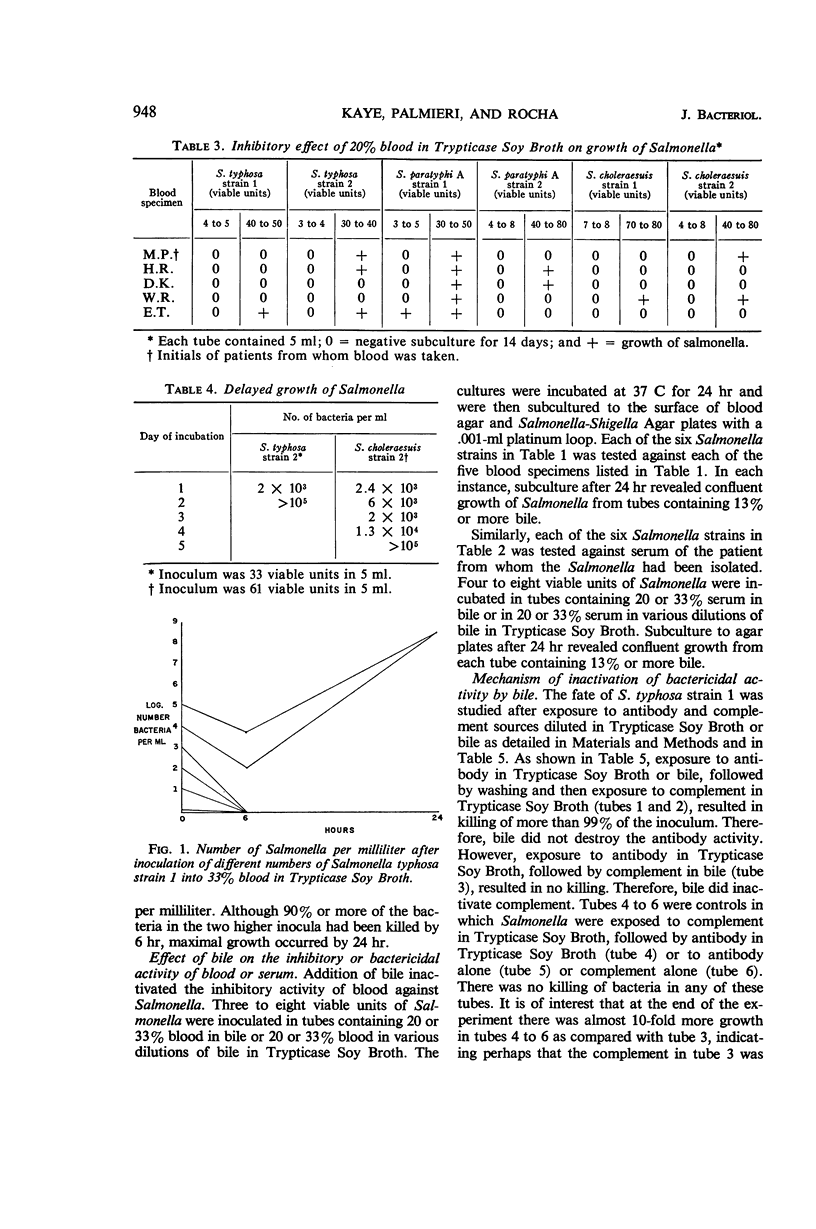
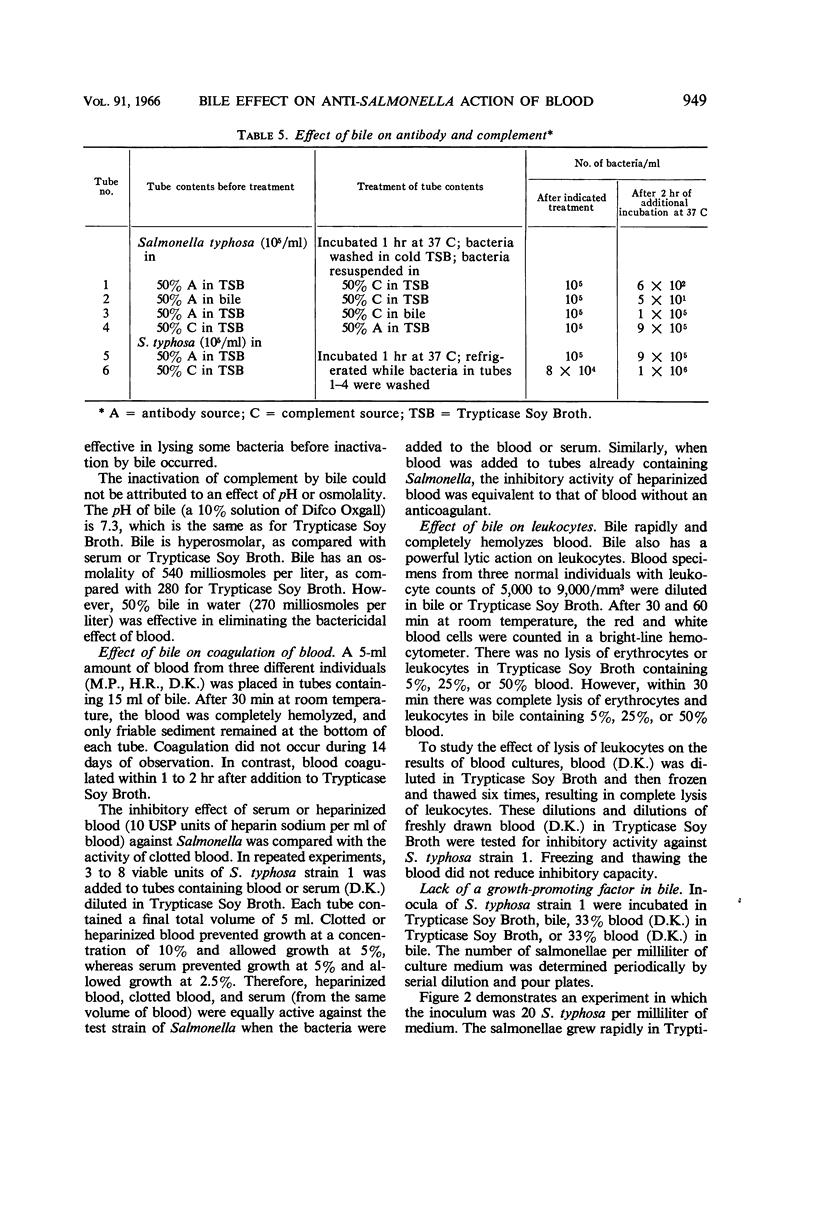
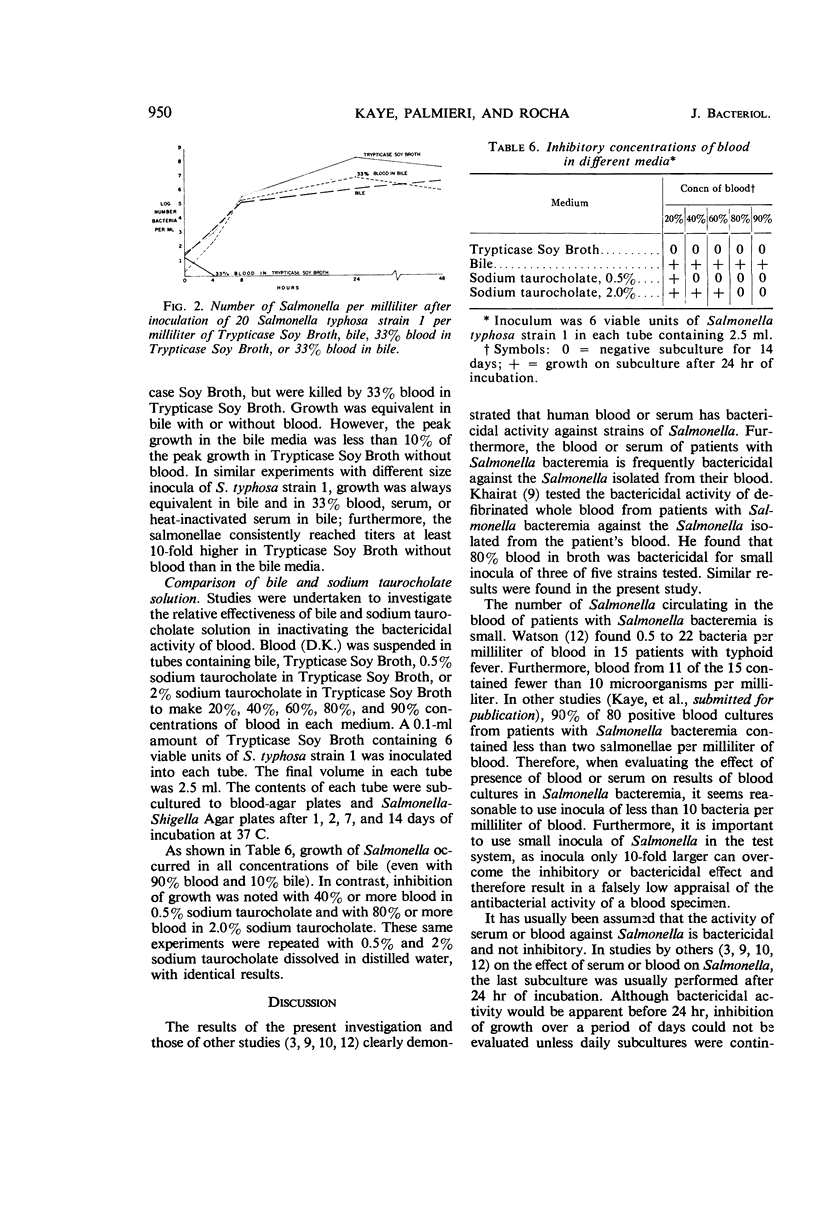
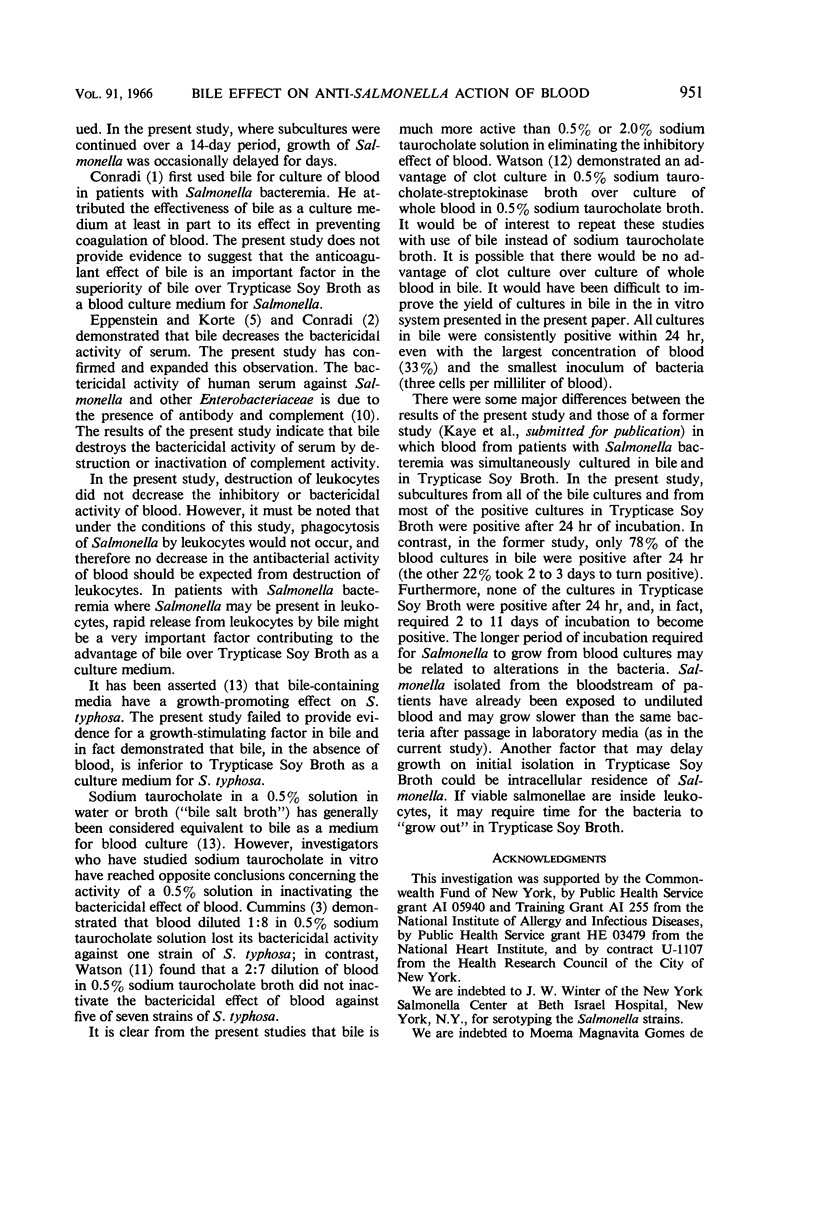
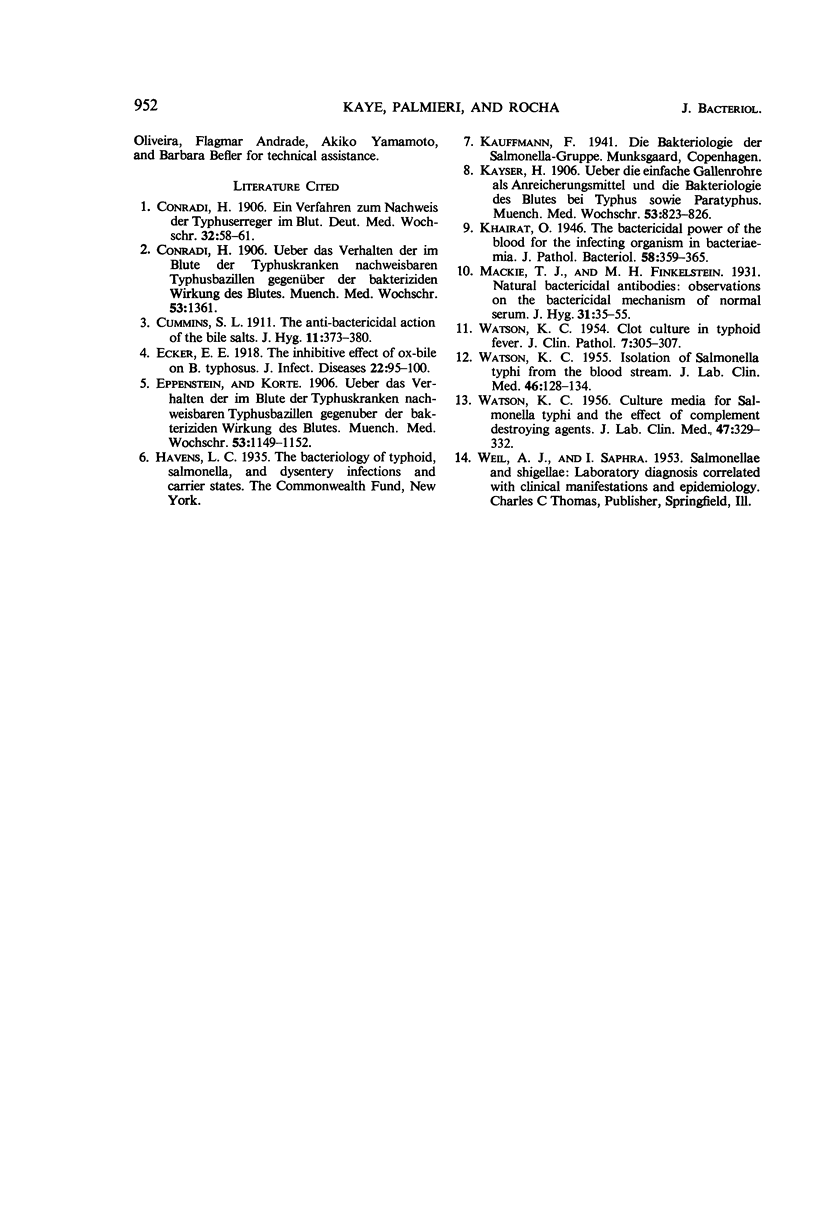
Selected References
These references are in PubMed. This may not be the complete list of references from this article.
- WATSON K. C. Clot culture in typhoid fever. J Clin Pathol. 1954 Nov;7(4):305–307. doi: 10.1136/jcp.7.4.305. [DOI] [PMC free article] [PubMed] [Google Scholar]
- WATSON K. C. Culture media for Salmonella typhi and the effect of complement destroying agents. J Lab Clin Med. 1956 Feb;47(2):329–332. [PubMed] [Google Scholar]
- WATSON K. C. Isolation of Salmonella typhi from the blood stream. J Lab Clin Med. 1955 Jul;46(1):128–134. [PubMed] [Google Scholar]


